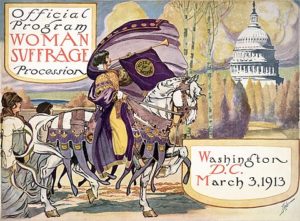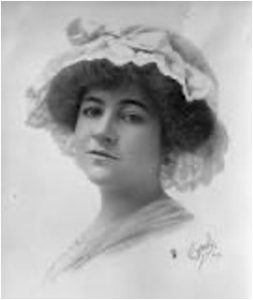When Your Historical Fiction isn’t all that Historical or Fictional
When I decided to write my historical novel, I chose the year 1913 because it was such a pivotal time period. The Gilded Age was coming to a close; World War I had not yet started. And prohibition was a few years away. Specifically, in 1913 the Grand Central Terminal opened, the famous Armory Art Show brought modern art to New York, and the brassiere was patented.

That year was an in-between time when some middle class women were starting to work outside the home (though their wages were paltry) and more women were joining the movement to demand the right to vote. This seemed like a good year to begin my series about a society writer who winds up writing investigative journalism.

As I started digging around the time period, I came upon an article about a popular heiress who disappeared in 1910. Dorothy Arnold had it all — money, beauty, personality. And yet one day she simply disappeared.
Dorothy was an aspiring writer but hadn’t had any success, and one theory is that she killed herself in despondency over her failed writing career. I have a hard time swallowing that. Suicides generally leave a body, and, besides, as heartbreaking as rejection can be for a writer, most of us have that voice in our head that says, maybe the next one.
Another theory is that she was pregnant and died during an illegal abortion — which was the only kind of abortion there was back then. This seemed at least plausible to me.
I was intrigued by Dorothy. She was lovely and smart, and she wanted to be a writer. Even if she didn’t die during an abortion, such a demise was a real possibility for any sexually active woman of the time period.

This led to research about abortion in the early 20th century. I found out that abortions were quite common then. No wonder! It was against the law for doctors to even talk about contraception. Poor women had to rely on home remedies which sometimes killed them. Rich women had access to doctors, but even with a doctor, fatalities can happen if the operation must be done in secret.
I decided that a young woman dying of an illegal abortion would be the inciting incident for the novel and proceeded to write my story, having no idea that by the time it was released, the judicial right to a safe pregnancy termination would be gone and many women and girls all over America would be in the same boat as women back in 1913.
Women fought hard for our right to vote in 1913. Now would be a good time to use it.
I think Faulkner said “the past isn’t dead. It’s not even past.” Thay couldnt be truer today for the issues of women’s rights, abortion, immigration and the rift between the super rich and everyone else. The world you describe in The Whispering Women of dangerous abortions is likely already a reality again for some.
Heartbreaking!
Right on, sister. I read this book and COULDN”T PUT IT DOWN. Masterfullly (mistressfully?) woven, well researched but a total page turner. I highly recommend! And YES, it’s definitely timely.
Katya Sabaroff Taylor, author My Haiku Life and Prison Wisdom.
Thanks so much, Katya!